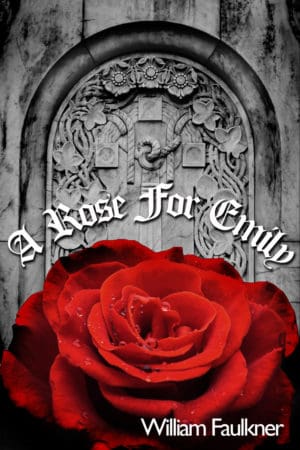 Season One of the astonishingly-popular Serial podcast had a profound effect on an entire world of listeners. When the 12-episode podcast ended on December 18, 2014, there had been 40 million downloads but I was not one of them. I discovered it sometime later, in the spring of 2015, and I binge-listened to every single minute, totally addicted.
Season One of the astonishingly-popular Serial podcast had a profound effect on an entire world of listeners. When the 12-episode podcast ended on December 18, 2014, there had been 40 million downloads but I was not one of them. I discovered it sometime later, in the spring of 2015, and I binge-listened to every single minute, totally addicted.
Last fall, when I wrote “Life after the Serial Podcast” which was published in the library’s September 16, 2016 newspaper column, it was long after any spoiler-alerts needed to be issued. Most interested people were familiar with the story. They has listened to it, had read about it, or had endured their friends discussing it, ad nauseam. The library had a listening program for all twelve-episodes in the fall of 2016. Rabia Chaudry’s book about the story of two Baltimore star-crossed lovers, Adnan’s Story, was already on the book store and library shelves.
The first season of Serial popularized all podcasts. Podcast listenership grew by 23% between 2015 and 2016 and popularity of the medium continues to explode. I have about three-dozen podcasts in my feed at any one time and I listen to podcasts daily. Among my favorites are Alec Baldwin’s Here’s the Thing, the New Yorker Radio Hour and Ted Radio Hour. I was briefly addicted this past winter to a five-episode shocker, Missing Richard Simmons. I never miss a segment of WBUR’s collaboration with the New York Times’ called Modern Love. I even have a podcast I listen to when I can’t sleep. Sleep With Me is purposely dull and meandering and practically guaranteed to bore you into dreamland.
Serial, seasons one and two, were produced by Sarah Koenig, a spin-off of the public radio broadcast This American Life. When we podcast junkies heard that Sarah Koenig (Serial) and Ira Glass (This American Life) were producing yet another possibly-mesmerizing series, we waited eagerly for it to be released this past week. When S-Town hit the Internet on March 28, all seven episodes were available at once.
I’d hit another podcast-binge jackpot.
There are no spoilers in this column other than to encourage you to bravely listen to S-Town. This story of clockmaker, gardener, chemist, and savant, John B. McLemore will mesmerize you. S-Town, like Serial, is a spectacularly well-produced podcast but it is not for the faint of heart. There is shocking language, more than enough sadness, multiple twists and turns, and dozens of opportunities to travel down online rabbit holes in search of answers.
Within just the first few listening hours, podcast junkies were searching Google maps and posting answers to many of the questions the podcast was leaving to our own devices. Pun intended. I was one of those drawn to Google maps and the strange, wooded terrain of Woodstock, Alabama. There’s a hedge maze, a 300-foot long rose garden, and an old Southern homestead. And a workshop full of lots of clocks.
What intrigued me more, however, were three literary references made near the middle of the first episode of S-Town. It is host and narrator Brian Reed’s first visit to Woodstock, Alabama to the home of John B. McLemore. McLemore assigned Brian Reed three short stories to read that first night: William Faulkner’s “A Rose for Emily”, Shirley Jackson’s “The Renegade”, and Guy de Maupassant’s “The Necklace” (also known as “The Diamond Necklace.”)
Many of us read Shirley Jackson’s “The Lottery” in high school or college. It is a creepy story, like many of Jackson’s writings. She is the author of one the best ghost stories ever written, The Haunting of Hill House (1959), which was made into an even creepier movie in 1963 (and another in 1999.)
“The Renegade” is included in a Shirley Jackson collection just published in 2016 in The Lottery and Other Stories. That book can also be found on audio in our streaming service, Hoopla! I easily downloaded it and enjoyed listening to the dramatic reading. The “renegade”, I found out, is the family dog who has been chasing and killing chickens in the neighborhood. The Renegade is eerily similar to Jackson’s short story, “The Lottery”. Her protagonist in “The Renegade” is Mrs. Walpole who finds that her family and neighbors have little sympathy for a chicken-killing dog.
Guy de Maupassant’s story “The Necklace” reminded me of The Gift of the Magi by O’Henry. The sacrifices made in the name of love – or envy – are very similar; however, there is no sweetness and no sympathy for selfish characters in The Necklace. The story can be found in Selected Tales of Guy de Maupassant which is available in print version in our library. You can also download the story on Hoopla! in the e-book The Necklace and Other Short Stories. “The Necklace” is a tale of a middle-class wife who yearns for a better one and the price she pays for her desire. When given the chance to attend a spectacular social event, she demands a proper, yet prohibitively expensive dress, and covets the diamonds that will accompany it.
Selected Short Stories of William Faulkner is available as an e-book through the Minuteman Library Network. A Rose of Emily is on many college reading lists and if you spend some time, you can find it online. Hoopla! has a study guide, Short Stories for Students, entirely devoted to “A Rose for Emily”, the story of a lonely Southern spinster in an even lonelier home.
Each episode of S-Town ends with a song sung by the English rock band, the Zombies, “A Rose for Emily.”
“The summer is here at last, the sky is overcast, and no one brings a rose for Emily.”
The stories John B. McLemore gives as reading assignments add one more dimension to haunting story of a man whose life was enriched by the smell and beauty of a 300-foot long hedge of roses he has planted on his beloved land in the town he hates, Woodstock, Alabama.
Charlotte Canelli is the library director of the Morrill Memorial Library in Norwood, Massachusetts. Read Charlotte’s column in the April 6th issue of the Norwood Transcript & Bulletin.




